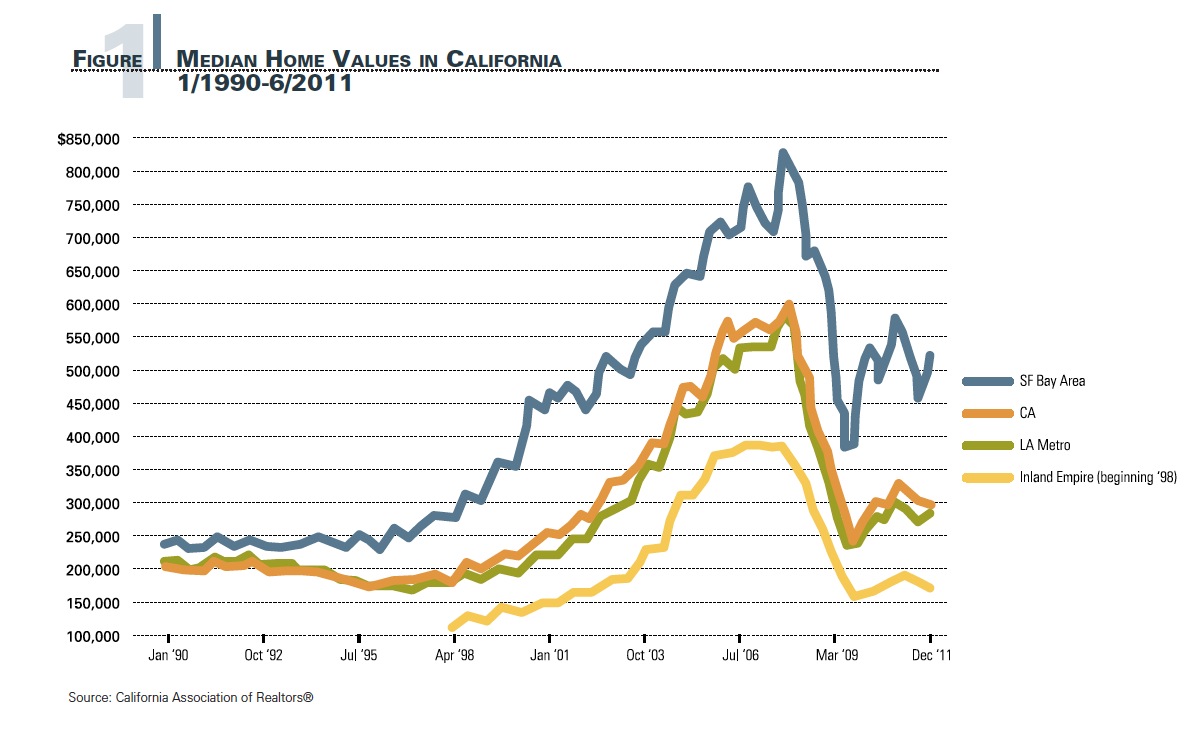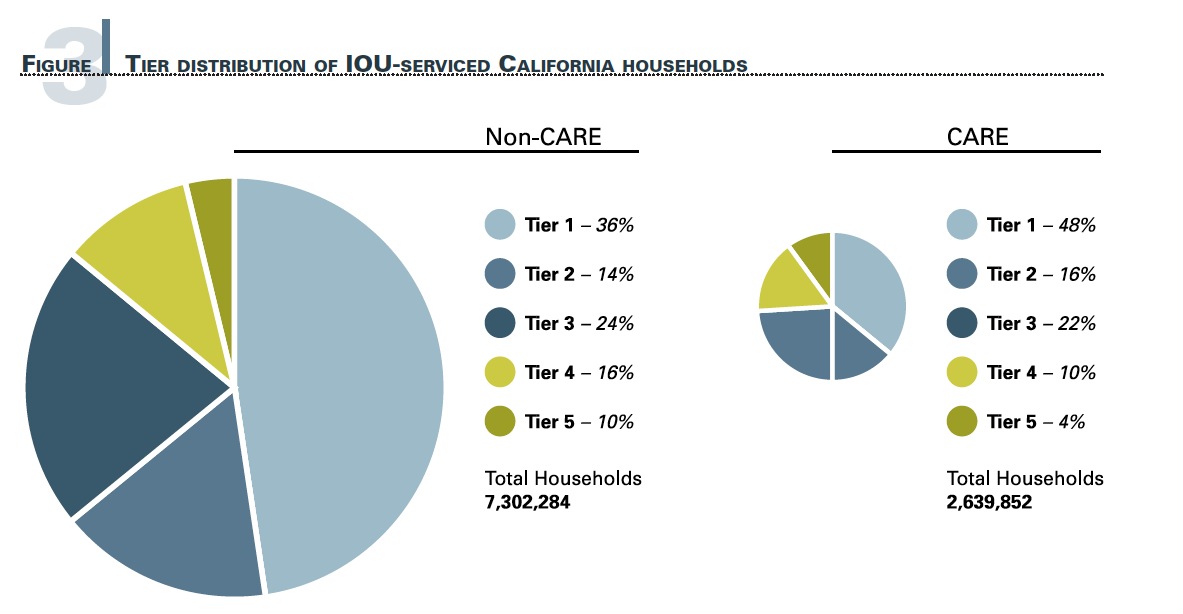BLUEGREEN ALLIANCE
Executive Summary
Building energy use is responsible for about 40 percent of U.S. greenhouse emissions. Residential buildings account for nearly half of those emissions, and more than 85 percent of residential emissions are attributable to the 79 million single-family homes nationwide. California is home to more than 10 percent of such properties—approximately 8.4 million. If we are truly going to achieve meaningful energy efficiency (EE) and carbon savings nationwide, we must transform the residential marketplace.
Many studies, such as those from McKinsey and Co., indicate that there is a significant pool of economically beneficial EE upgrade opportunities ripe for investment. Existing homes represent one such opportunity, and many regions are looking for ways to seize it. In California, the Long Term Energy Efficiency Strategic Plan calls for 100 percent of existing homes to reduce energy use by either 30 percent or 70 percent over 2008 levels. However, progress toward the goals outlined in the strategic plan is not moving ahead quickly enough; at the current rate, it will take 290 years to reach the targets set out in the plan to be achieved within the next eight years.
This paper presents the case for deploying statewide policies, alongside private financing innovations, that are capable of moving the entire residential market forward along an accelerated EE pathway.
California today is ground zero of the housing crisis. Home sales prices are depressed, one out of every three homes is still underwater, and there’s a large volume of unsold and vacant housing inventory. The state is also experiencing a jobs crisis, with one of the highest unemployment rates in the nation. By coupling the worlds of borrower protection and energy efficiency, by helping protect home purchasers from the unforeseen surprise of high energy bills and consumption, California can simultaneously strengthen loan portfolios, support neighborhoods, and create quality jobs.
However, making this vision a reality will require crafting policies that consider our state’s energy, housing, and economic recovery agendas in unison. We posit that transformation can occur by more deeply uniting the language, context, financing, and market segments of the single-family housing arena with the needs of California’s energy and climate agenda.
This integration should begin by injecting EE actions into key moments in time during which homeowners already act and invest resources. We think it means generating consumer demand by piggybacking an EE action on a salient moment when homeowners are already engaged in a large transaction, a large renovation, or already interested in averting an unnecessarily high energy charge. Namely, we urge the state to help homeowners “pull the trigger” on EE by encouraging action at three key moments in homeownership tenure:
- time of sale;
- time of renovation; and
- time of energy rate tier increase.
Because each of these events already requires homeowners and homebuyers to exert an effort or pay for a home-related function, an additional EE action becomes merely a small piece of a larger context. Embedding an energy survey, disclosure, financial incentives, or system upgrades into these ordinary life-cycle events can over time reach a large market and motivate positive consumer behaviors.
Most stakeholders see opportunities to further their own interests through residential EE efforts. Environmental organizations and state energy officials aim to achieve statewide energy reductions, while the EE industry and labor advocates point out that efficiency gains can create high-quality jobs and a well-trained workforce of contractors and construction workers. Catalyzing massive numbers of EE upgrades would satisfy the missions of both consumer protection and loan stabilization banking authorities, while also driving greater demand for more efficient homes. Consumer and banking advocates see energy savings and the attendant energy bill reductions as opportunities to reduce household indebtedness at a time when many families are underwater on their mortgages or struggling to stay on top of payments. Indeed, an executive at one of the largest mortgage banks in the nation remarks that understanding a prospective home’s utility costs “gives borrowers a more educated decision about home affordability, and results in a marginally lower risk for financial institutions.” Real estate agents see new opportunities to market their services and capture more value for buyers and sellers.
While these priorities may seem disparate, they suggest that the best first step toward achieving largescale energy efficiency upgrades in the existing stock of single-family homes is to leverage the financial savings from energy use reduction to ease household budget pressures. By promoting actions that are easy, cost-effective, and value-additive, we can address stakeholders’ diverse needs while further encouraging private capital to participate in this lucrative market transformation.
Our recommendations are designed to promote meaningful progress toward scaling residential EE improvements and jumpstarting the state’s economic recovery, even in the face of challenges provided by the current housing market. We recommend implementing measures from each of four categories of actions: disclose, enforce, incentivize, and finance. They include, but are not limited to, the following:
- The energy efficiency of a home, including cost and consumption information, should be disclosed at the time of sale. California should also require a uniform, standardized list of energy features to be disclosed in each and every home advertisement on Multiple Listing Services.
- Existing EE incentive programs and funding in the state should be re-targeted so that they are specifically relevant at each trigger point.
- Strong standards to ensure work quality should be attached to any incentives for energy upgrades. At a minimum, incentives should be conditioned on proof of required permits and the use of licensed, bonded contractors for all EE retrofit work. For successful implementation, better enforcement of permitting requirements is also needed.
- California utilities should expand their existing tier-alert notifications to all ratepayers—not just those that have opted in to receive
them—and make them even more meaningful by including cautionary information to the consumer about the long-term costs of paying high-tier rates. Consumers who remain in upper energy rate tiers for a significant period of time (such as three consecutive months) should be offered an EE upgrade to reduce consumption. - California should signal for an alignment of housing and energy in financial products by extending the spirit of the Community Reinvestment Act (CRA). This could be accomplished by asking federal regulators to provide additional positive consideration in CRA evaluations to financial institutions that lend to low- and moderate-income homeowners or homebuyers who undertake EE improvements.
Our analysis suggests that implementing these recommendations (and others outlined in this paper) will significantly increase the pace of residential energy efficiency efforts, yielding 5–10 times more upgrades than are expected at the current rate. At the upper end, that means reaching nearly 1.8 million homes within 10 years.
Download full report (PDF): Pulling the Trigger: Increasing Home Energy Savings
About BlueGreen Alliance
www.bluegreenalliance.org
“The Blue Green Alliance is a national, strategic partnership between labor unions and environmental organizations dedicated to expanding the number and quality of jobs in the green economy.”
Tags: BlueGreen Alliance








 RSS Feed
RSS Feed